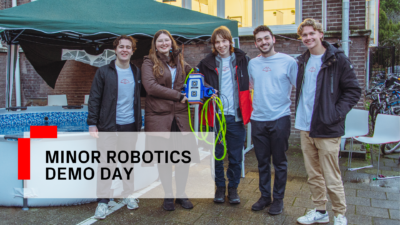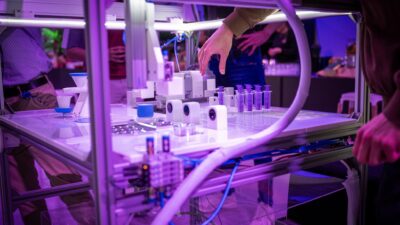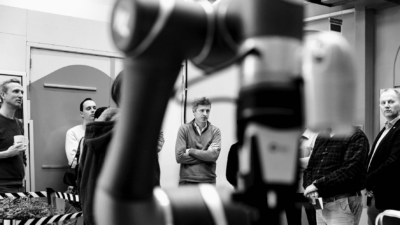With their autonomous drone race code they were the fastest in completing a race track, and with their innovative approach they placed themselves as the winner in a large international field of participants.
The team considers winning this competition an important step towards bringing societal applications of drones closer. Speed, agility and risk assessment are very important if you want to apply drones for new societal applications such as bringing a defibrillator to a person, or delivering a package at the door.
“Our drone learned to determine its own position in relation to the gates in a robust way, but also to predict the flight characteristics of the drone”
Christophe de Wagter – MAVLab
Fast and reliable solution
Christophe de Wagter, drone researcher at the RoboValley based MAVLab: “Inspired by human drone pilots, our drone learned to determine its own position in relation to the gates in a robust way, but also to predict the flight characteristics of the drone. The decisive factor was that the drone learned to assess the risks in order to be able to accelerate when things went well or to slow down when things did not go well. This made our solution fast and reliable.”
The experience gained by the MAVLab in its research into very small manoeuvrable microdrones with limited computing power, such as the recently published DelFly Nimble in Science, played an important role in making very fast light code for the AIRR races.

Further development
The aim of the Artificial Intelligence Robotic Racing (AIRR) competition is to accelerate the application of Artificial Intelligence (AI) in drones through futuristic racing competitions. The challenge of defeating a human pilot remains. In order to achieve this, further developments are needed that bring the drone even closer to its physical limits. In addition, it is important to adapt the strategies developed to other applications, such as the rapid exploration of areas during rescue operations or the delivery of packages.
DRL RacerAI
The participating teams had to use a standard drone, the DRL RacerAI. The drone has an NVIDIA Jetson AGX Xavier operating system and four stereoscopic cameras on board. The teams could not use GPS, data exchange or human intervention – so the quality of the code was decisive. The AIRR competition was organised by the Drone Racing League (DRL) and Lockheed Martin. The teams competed for the first prize of 1 million dollars.
Click here to read the full report.



